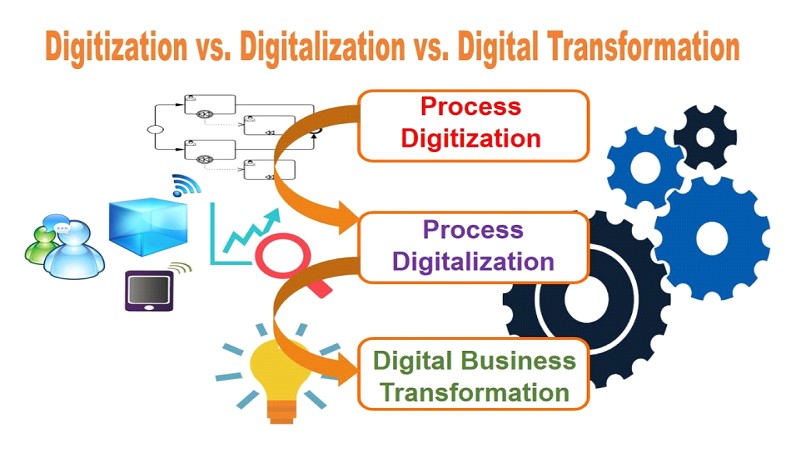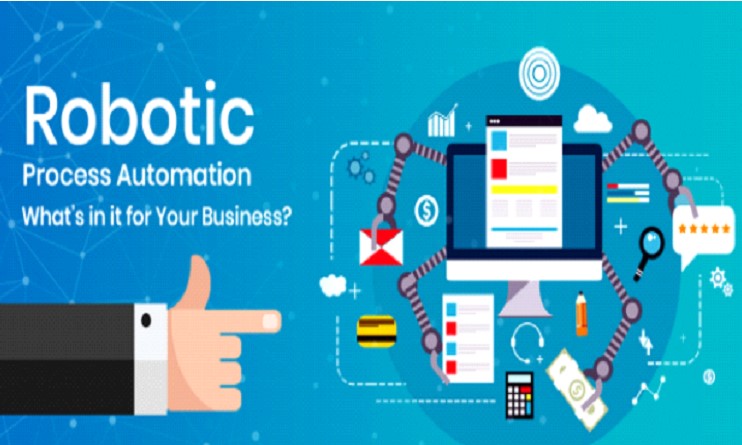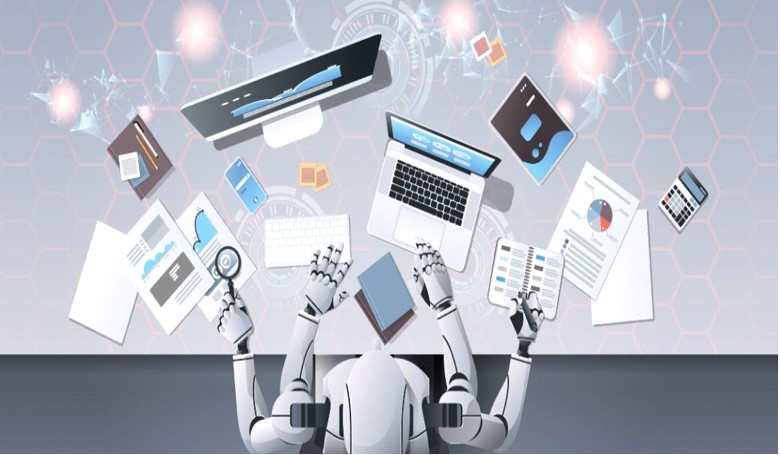Delivering Solutions with Technology Edge
We as Trends Edge, are always adopting the evolving technologies to help our customers in adopting cutting-end technologies to get timely upgraded and equipped with the trending edge technologies. This will make sure for our customers to reach out to their end-customers or consumers with modernized channels to facilitate flexible trade.
Trends Edge main objective is to increase the productivity of any business in terms of Operational execution, faster delivery of the trade, quick reach-out to the markets, controlling and monitoring company spending which are the areas can be efficiently managed by instant information which is possible by Business Process and Data Digitalization using Robotic Process Automation AIML, Block-Chain technologies to achieve the Digital Transformation along with the business information Big-Data. Any Business today running with conventional methods need to upgrade to the current trends to be eligible to adopt digital Transformation. We as TRENDS EDGE will provide Total Comprehensive Solutions.

Trends Edge has a special wing innovation team for the business digitalization, the team is experienced in assessing your organization business applications to identify the processes gaps, improvable areas and plan to integrate all the possible business areas with automation, system integrations and digitalization. We as Trends Edge, will perform the system health check and possible business digital transformation areas with recommendations that help organization to utilize the enterprise resources to the fullest with enhancements, process integrations and automation.
Trends Edge will adopt the approach of applying solutions with the current technologies to transform your business processes into digitalization using the technologies artificial intelligence and machine learning, internet of things for the smart processes, data science and blockchain for the secured and tampering proof data for the highly securing data blocks for the future generations.
As stated by Gartner, digitalization refers to using digital technologies to change a business model and provide new revenue and value-producing opportunities. We can say that it includes every activity and process that’s made possible by digital technologies. Digitalization in business has brought many companies to success. From automating their marketing activities to processing their orders, businesses have fully leveraged digital technologies.
Digitalization in business helps to improve the efficiency of its operations, making automation possible. There are fewer human errors and operational costs are reduced, due to the decreased need for human resources. To fully understand digitalization in business, we must understand the role technology plays in the whole process. Digital technologies have reconfigured the whole business landscape, transitioning from traditional analog to digital. Data isn’t stored anymore on any storage devices but on the cloud, thus ensuring there are no data silos.
Cloud computing helped many companies gain a competitive advantage amongst their competitors. Even we use cloud databases on a daily basis, as they have proven to have an enormous impact on team collaboration and performance.
By using cloud storage, data loss is prevented, and data backups are automated.Digitalization in business has brought countless changes and we’ll go through a few so you get a better grasp on the whole topic of digitalization.
Advantages of digitalization in business, TE has already pointed out that digitalization has brought many novelties in the business landscape. Now, let’s go through some specific novelties and how they benefit your business. Also, you’ll see how to take advantage of those benefits starting even today:
⦁ Increased efficiency of all operations
⦁ Fewer human errors
⦁ Safer data storage in the cloud
⦁ Reduced operational costs
⦁ Enables data analysis

We already elaborated on how all of this impacts your business, but we can always say a few words more to clarify.
Due to the implementation of digital technologies, workflows are becoming streamlined and there are fewer human errors. All of the operations are executed more efficiently, thanks to these streamlined workflows by Trends Edge solutions, which enable businesses to reduce operational costs. As we said, companies tend to store their data in cloud databases, and now that’s a standard. Today, it’s almost impossible to picture a great number of companies not using cloud storage. Cloud computing giants such as 3M, Microsoft, and Google offer high-security cloud services, enabling careless digital asset management.
Business digitalization is the integration of technology that transforms the way organizations operate across their different areas, services and channels, with customers and other stakeholders. Digitalization is a profound transformation of business, involving the use of digital technologies to optimize business processes, improve the company's productivity and improve the experience with customers. One of the primary digitization steps is the satisfaction of consumer needs, which change along with the development of technologies, namely, the creation of a more comfortable and prompt interaction between the client and the company. However, proceeding from the question of what digitalization of business is.

The Importance of Digitalization Implementation, Today, more and more executives of companies and entrepreneurs have realized the need for changes in their business. It is useless to struggle with the concept of universal digitalization - it needs to be accepted and companies should understand how it can be built in. This is one of the most important directions that will help to make a new technological breakthrough in the world economy, while significantly reducing costs and optimizing production processes to preserve the environment, save human, money and time resources, and also improve the standard of living in general. Companies that do not start the digital transformation of their business today will be ineffective and will simply disappear under the pressure of new market realities and more pragmatic "digital" competitors of tomorrow.
Trends Edge innovation team specialized in business process robotic automation and contributed towards process automation and digital transformation. Robotic process automation is the technology that allows anyone today to configure computer software, or a “robot” to emulate and integrate the actions of a human interacting within digital systems to execute a business process. Rpa robots utilize the user interface to capture data and manipulate applications just like humans do. They interpret, trigger responses and communicate with other systems in order to perform on a vast variety of repetitive tasks. Only substantially better: an rpa software robot never sleeps and makes zero mistakes.

The vital role of robotic automation is to offer improved customer experience and operational excellence by increasing performance, efficiency and agility. Robotic automation helps businesses improve their overall productivity. ... However, integration of rpa requires proper planning beforehand. We have already experienced the ability to talk to your smartphone or computer and ask for answers to questions or have simple tasks be undertaken. Imagine being able to tell your computer to do a more complex task involving many steps, for example – finishing a report for you. But, is it really possible and effective? This is exactly where Robotic Process Automation comes into play. RPA systems are used to automate basic and repetitive tasks, which may involve many steps. Let’s start with the basic definition of RPA.
Trends Edge offers a special bundle of solutions that can automate your day to day operational activities, manual list of tasks, repeatedly executing management tasks, manual reports and perspective based changing data reports for planning, forecasting, production, scheduling, reconciling and decision making elements that can monitor spendings.

Cloud computing helped many companies gain a competitive advantage amongst their competitors. Even we use cloud databases on a daily basis, as they have proven to have an enormous impact on team collaboration and performance.
By using cloud storage, data loss is prevented, and data backups are automated.Digitalization in business has brought countless changes and we’ll go through a few so you get a better grasp on the whole topic of digitalization.
Advantages of digitalization in business, TE has already pointed out that digitalization has brought many novelties in the business landscape. Now, let’s go through some specific novelties and how they benefit your business. Also, you’ll see how to take advantage of those benefits starting even today:
⦁ Increased efficiency of all operations
⦁ Fewer human errors
⦁ Safer data storage in the cloud
⦁ Reduced operational costs
⦁ Enables data analysis


We already elaborated on how all of this impacts your business, but we can always say a few words more to clarify.
Due to the implementation of digital technologies, workflows are becoming streamlined and there are fewer human errors. All of the operations are executed more efficiently, thanks to these streamlined workflows by Trends Edge solutions, which enable businesses to reduce operational costs. As we said, companies tend to store their data in cloud databases, and now that’s a standard. Today, it’s almost impossible to picture a great number of companies not using cloud storage. Cloud computing giants such as 3M, Microsoft, and Google offer high-security cloud services, enabling careless digital asset management.
Business digitalization is the integration of technology that transforms the way organizations operate across their different areas, services and channels, with customers and other stakeholders. Digitalization is a profound transformation of business, involving the use of digital technologies to optimize business processes, improve the company's productivity and improve the experience with customers. One of the primary digitization steps is the satisfaction of consumer needs, which change along with the development of technologies, namely, the creation of a more comfortable and prompt interaction between the client and the company. However, proceeding from the question of what digitalization of business is.
The Importance of Digitalization Implementation, Today, more and more executives of companies and entrepreneurs have realized the need for changes in their business. It is useless to struggle with the concept of universal digitalization - it needs to be accepted and companies should understand how it can be built in. This is one of the most important directions that will help to make a new technological breakthrough in the world economy, while significantly reducing costs and optimizing production processes to preserve the environment, save human, money and time resources, and also improve the standard of living in general. Companies that do not start the digital transformation of their business today will be ineffective and will simply disappear under the pressure of new market realities and more pragmatic "digital" competitors of tomorrow.

The vital role of robotic automation is to offer improved customer experience and operational excellence by increasing performance, efficiency and agility. Robotic automation helps businesses improve their overall productivity. ... However, integration of rpa requires proper planning beforehand. We have already experienced the ability to talk to your smartphone or computer and ask for answers to questions or have simple tasks be undertaken. Imagine being able to tell your computer to do a more complex task involving many steps, for example – finishing a report for you. But, is it really possible and effective? This is exactly where Robotic Process Automation comes into play. RPA systems are used to automate basic and repetitive tasks, which may involve many steps. Let’s start with the basic definition of RPA.
Trends Edge offers a special bundle of solutions that can automate your day to day operational activities, manual list of tasks, repeatedly executing management tasks, manual reports and perspective based changing data reports for planning, forecasting, production, scheduling, reconciling and decision making elements that can monitor spendings.

Copyright 2022 Trends Edge